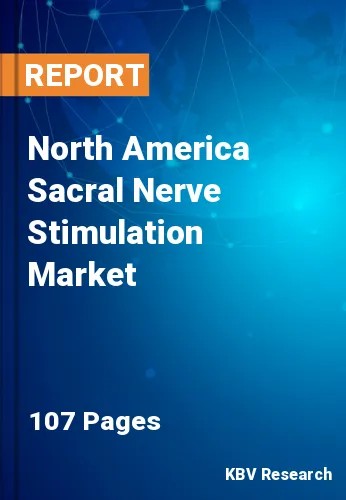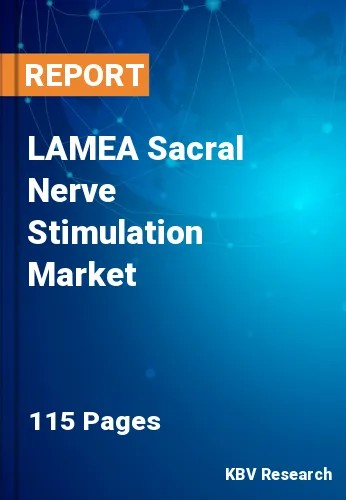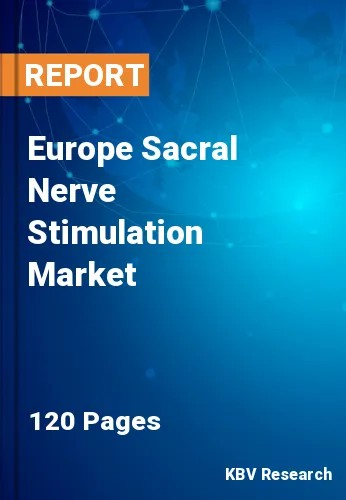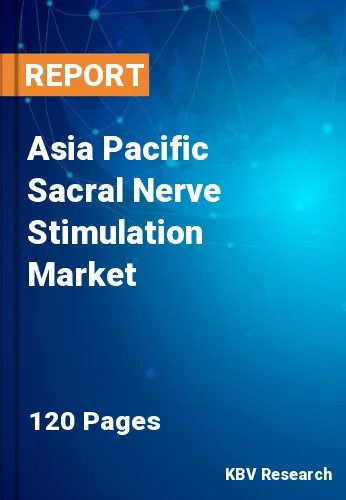The Worldwide Sacral Nerve Stimulation Market is Projected to reach USD 595.9 Million by 2030, at a CAGR of 5.1%
Special Offering :
Industry Insights | Market Trends | Highest number of Tables | 24/7 Analyst Support
Sacral Nerve Stimulation Market Growth, Trends and Report Highlights
According to a new report, published by KBV research, The Global Sacral Nerve Stimulation Market size is expected to reach $595.9 million by 2030, rising at a market growth of 5.1% CAGR during the forecast period.
The Chronic Anal Fissure segment is experiencing a CAGR of 5.7% during (2023 - 2030). When patients opt against more invasive surgical procedures, sacral nerve stimulation provides an excellent alternative therapy option for persistent anal fissures. The growth in this segment is attributable to rising awareness of this problem, improvements in medical diagnostics, and a rise in the use of sacral nerve stimulation as a successful therapeutic strategy for treating chronic anal fissures and their accompanying symptoms.
The Devices segment is leading the Global Sacral Nerve Stimulation Market by Product in 2022; thereby, achieving a market value of $478.3 Million by 2030. This is because sacral nerve stimulation devices are readily available, and increased research and development efforts aimed at more advanced stimulators have spurred the expansion of the devices segment. The market is expanding because more healthcare practitioners use sacral nerve stimulation devices.
The Specialty Clinics segment is experiencing a CAGR of 5.5% during (2023 - 2030). This results from the availability of focused care and experience in treatment for urological incontinence disorders in specialist clinical settings. These clinics' popularity in the sacral nerve stimulation market analysis is due to the likelihood that patients seeking customized treatments will choose them.
The North America region dominated the Global Sacral Nerve Stimulation Market by Region in 2022, and would continue to be a dominant market till 2030; thereby, achieving a market value of $223.1 Million by 2030. The Europe region is anticipated to grow at a CAGR of 4.9% during (2023 - 2030). Additionally, The Asia Pacific region would showcase a CAGR of 5.8% during (2023 - 2030).
Full Report: https://www.kbvresearch.com/sacral-nerve-stimulation-market/
The market research report has exhaustive quantitative insights providing a clear picture of the market potential in various segments across the globe with country wise analysis in each discussed region. The key impacting factors of the market have been discussed in the report with the elaborated company profiles of Medtronic PLC, Axonics, Inc., Beijing PINS Medical Co., Ltd., PZMed, Laborie Medical Technologies, Synapse BioMedical, Inc., Johnson and Johnson, LivaNova PLC, Boston Scientific Corporation, and Saluda Medical Pty Ltd.
Global Sacral Nerve Stimulation Market Segmentation
By Application
- Urinary & Fecal Incontinence
- Chronic Anal Fissure
- Others
By Product
- Devices
- Accessories
By End User
- Hospitals
- Specialty Clinics
- Others
By Geography
- North America
- US
- Canada
- Mexico
- Rest of North America
- Europe
- Germany
- UK
- France
- Russia
- Spain
- Italy
- Rest of Europe
- Asia Pacific
- China
- Japan
- India
- South Korea
- Singapore
- Malaysia
- Rest of Asia Pacific
- LAMEA
- Brazil
- Argentina
- UAE
- Saudi Arabia
- South Africa
- Nigeria
- Rest of LAMEA
Companies Profiled
- Medtronic PLC
- Axonics, Inc.
- Beijing PINS Medical Co., Ltd.
- PZMed
- Laborie Medical Technologies
- Synapse BioMedical, Inc.
- Johnson and Johnson
- LivaNova PLC
- Boston Scientific Corporation
- Saluda Medical Pty Ltd.
Related Reports:



